How to Drop a Milk Feed
- Why your baby’s milk intake at 12 months will look remarkably different in volume and frequency than it did at 6 months
- How babies learn to recognize and respond to their hunger and fullness cues (...and spoiler alert: it doesn’t happen when they’re full of milk!)
- Suggested feeding schedule for a 1 year old baby transitioning off of breastmilk/formula and on to cow’s milk with 3 meals, milk after meals and bedtime milk each day.
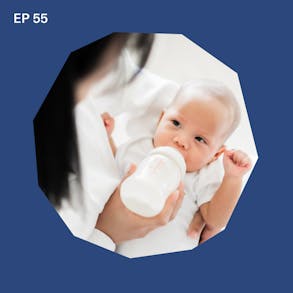
LISTEN TO THIS EPISODE
Episode Description
How do you drop a milk feed? The whole point of weaning is your baby gradually replaces the nutrition he or she was getting from breastmilk and/or formula and replaces that with the foods they’re learning how to eat. But at some point during the weaning process, we have to be proactive about dropping that first milk feed.
In this episode I’m covering some ideas for gradually cutting back on your baby’s milk intake as food intake increases. Do you cut the night feed? The morning milk? And how do we set up a feeding schedule such that milk follows food as we approach your baby’s first birthday? Listen in for all you need to know about dropping milk feeds!

Links from this Episode
- Baby-Led Weaning with Katie Ferraro program with the 100 First Foods™ Daily Meal Plan, join here: https://babyledweaning.co/program
- Baby-Led Weaning for Beginners free online workshop with 100 First Foods™ list to all attendees, register here: https://babyledweaning.co/baby-led-weaning-for-beginners
Other episodes related to this topic
- Episode 235 - When to Move Milk Behind Food with Nicole Boehm
- Episode 187 - 8-9 Months Old Babies: Sample BLW Feeding Schedule

Latest Episodes
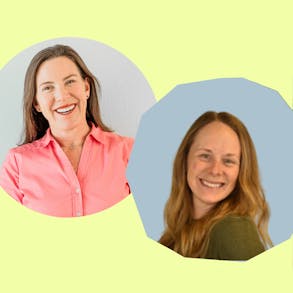
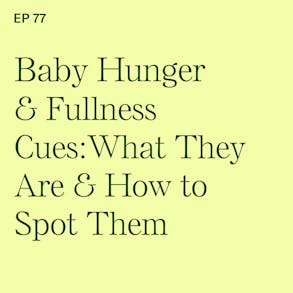
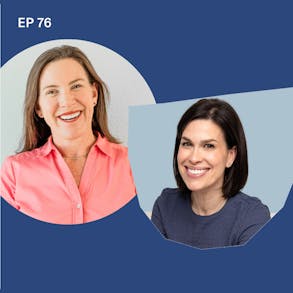
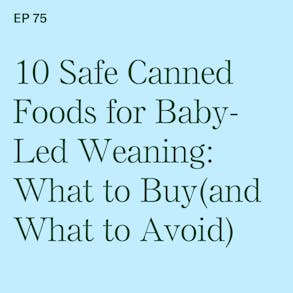
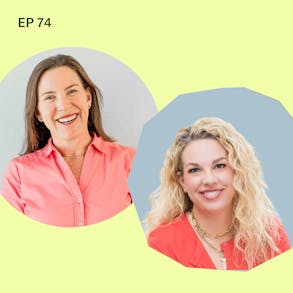
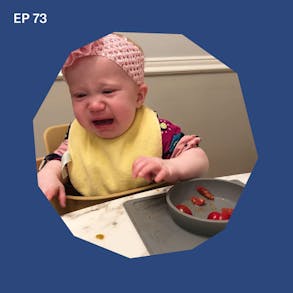
Rula (0s):
So here's something that I have only realized recently. I actually can admit when I need help. That's not the hard part. It's actually finding the time to do something about it. So for example, fall sports are starting in our family. We have seven kids, they're all playing soccer. Those seven kids are also playing flag football. Not my idea. My husband signed them up. I coach my oldest daughter's school volleyball team, then two kids that take piano lessons, as do I, even though I'm terrible. I literally cannot be in all of these places at once. I need help getting my kids to and from their activities. I admit that the hard time is actually like sitting down and finding the time to actually do something about it and have somebody help me. I know you're busy, you're juggling family and work and life and it's a lot. And trying to squeeze in time to help yourself in the way that you know you need to is sometimes just feels like one more thing on your to-do list. And that is why I think Ruler is so brilliant. So Ruler makes it easy to get high quality mental healthcare that's actually affordable and fits into your life. ULA partners with over 15,000 licensed therapists and psychiatrists across the country and with most major insurance plans too. So that average copay, it's just $15 per session, and depending on your insurance, it could even be zero. So Ruler meets you where you are, literally from your couch in your car, driving to your kids' sports, nursing your baby, wherever you have wifi, and 50 minutes to yourself. They're gonna help you find a therapist who matches your needs and your preferences. They stick with you through the process. They check in and make sure it's working. Therapy should not be another stressor, and with ula, it is not. Thousands have already trusted ULA to support them on their journey toward improve mental health and overall wellbeing. If you head over to ula.com/weaning, you can get started today. After you sign up, they're gonna ask you where you heard about them. Please help support our show. Tell them that baby led weaning show sent you. Go to RU la.com/weaning and take the first step towards better mental health. Today, you deserve quality care from someone who cares.
Katie Ferraro (2m 11s):
So essentially around the eight or the nine month mark, this is where we're actually starting the day with food. So you do the solid food meal, breakfast, that's what you call it, and then you practice outta the open cup for five minutes after. Then you take a break, you play, you do your thing with your baby, and then if they need a nurse or have a bottle before they go down for the nap, that's when you do it. So you see how we're starting to prioritize the food before the infant milk. This is really key in helping your baby get more of their nutrition from food and less of it from infant milk as they move towards that one year mark. Because ideally by one year of age, most of your baby's nutrition can be coming from food, but only if you're doing the work to drop the milk feeds along the way.
Katie Ferraro (2m 54s):
Hey there, I'm Katie Ferraro, registered dietitian, college nutrition professor and mom of seven specializing in baby-led weaning. Here on the Baby-led weaning with Katie Ferraro podcast. I help you strip out all of the noise and nonsense about feeding, giving you the confidence and knowledge you need to give your baby a safe start to solid foods using baby-led weaning. All right, welcome back. We're talking about one of my favorite topics today. It's not one that all parents think about when their babies are starting solid foods, but how do I drop a milk feed, right? Because the whole point of weaning is we're working your baby from at six months.
Katie Ferraro (3m 36s):
When you started out, a hundred percent of that baby's nutrition came from infant milk, breast milk or formula. And then you get to the one year point where most of your baby's nutrition can be coming from food, but somewhere along that weaning continuum, the food intake starts to uptick and you gotta start bringing the milk down. But how do you jumpstart that if you're breastfeeding? It happens pretty naturally, but especially for those bottle feeding mamas out there, they're like, wait a minute, when do I actually rip the bandaid off and get rid of that first milk feed? That's what we're going to be talking about today. Now, I like to start each of these mini solo training episodes with a baby-led weaning tip of the day. And today's tip is it doesn't really matter which milk feed you drop first.
Katie Ferraro (4m 17s):
You do you what works for you. I know you love your schedule, but if you're not really particular about which milk feed to get rid of, first one that I really recommend is The morning milk feed. Okay? Especially when your baby hits phase two of baby-led weeding. So that's after you've been doing solid foods for about eight weeks. So somewhere, if you think about it, you start at six months. So somewhere in the eight month mark, your baby's been eating solid foods for about eight weeks. So you probably hit about 40 foods or so, right? We do one new food a day, five foods a week. After eight weeks, you've done 40 of the foods on the 100 FIRST FOODS list. By that point, your baby is gonna, it kind of all clicks, okay? And you're gonna notice, wow, they're eating more food. That's when it's time to drop that milk feed.
Katie Ferraro (4m 58s):
So we're gonna talk a little bit more about timing today, but starting in the morning, dropping that morning milk feed, it kind of sets your baby up for success. It's perfectly acceptable for your eight month old to wake up in the morning. You change their diaper and you put them right in that highchair and start the day out with solid food. You do not have to do an infant milk feeding. Now, if you're nursing, you might wanna empty those boobies. So you may just keep that morning milk feed, or if you're into pumping or you're trying to wean off, you might skip that morning milk feed too. But if you're bottle feeding, for sure, feel free to skip that. And then we're moving into that nice schedule of prioritizing food. So we're starting the day with food first and then milk will come after the meal. So we'll talk a little bit about scheduling in today's episode, but don't be scared to drop that morning milk feed.
Katie Ferraro (5m 40s):
And another second tip, bonus tip for today. I personally like to hold onto that bedtime milk feed for dear life. It's the very last one that I ever let go because I want your big, beautiful baby to be sleeping through the night, especially if you eat dinner a little bit earlier, you're gonna wanna hold onto that night feed. So today's training is actually clipped from one of the videos in my online program called Baby-Led Weaning with Katie Ferraro. And this is everything you need to give your baby a safe start to solid foods. If you are tired of hunting and pecking around the internet and AI and trying to figure this stuff out all on your own, don't worry, I did it for you.
Katie Ferraro (6m 21s):
I've got all the logistics on how you get your baby from a hundred percent infant milk at six months of age to all the nutrition from food at one year of age. We do it by feeding your baby a hundred different foods. So inside of that program, I've got my a 100 First Foods Daily Meal Plan. If you don't even want to think about which food to feed your baby. Next, I also got my 100 First Foods content library with all the videos and instructions and recipes on how to make all these foods for your baby's age and stage. But I also have a lot of instructional videos in the three different distinct phases of baby-led weaning. So this particular training happens to be from phase two of baby-led weaning. It's called How to Drop a Milk Feed.
Katie Ferraro (7m 1s):
So if you're already in the program, this might sound a little familiar, but let's get started diving in. How do I drop a milk feed? And hey, if you wanna check out the program, it's called Baby-Led Weaning with Katie Ferraro, go to baby-led weaning.co/program. Everything you need is right there. I promise you it'll be the best investment you made in the first year of your baby's life. Alright, so let's start out with when do you drop the milk feed? Okay? There's no right or wrong answer to this, but before I give you a suggestion, I wanna point out something that's not really that intuitive. You know, your baby's getting bigger, okay? Their diapers are getting bigger, their clothes are getting bigger, but their milk intake should actually not be getting bigger sometimes here in phase two, okay?
Katie Ferraro (7m 43s):
Usually when your baby's around eight or nine months of age, that's when you're gonna top out on the max volume of breast milk or formula that your baby will be drinking. And that feels weird 'cause you're like, my baby's getting bigger. Wouldn't they continue to drink more? No, because this is when they start to eat more solid food and they drink less. Okay? It's not really a big secret or something you have to search really hard for, but you're gonna notice your baby's gonna be less interested in the bottle or your breast. And your first inclination is to freak out like, oh my gosh, how are they gonna get enough nutrition? Hey, they're starting to get more nutrition from food, okay? And another thing to keep in mind is that your baby's rate of growth is going to slow down as they approach that first year.
Katie Ferraro (8m 22s):
So relative to their body weight, they actually start consuming a little bit less milk. So I just want you to be out the lookout for a dip in your baby's interest in milk. It's usually gonna correlate with when you notice they're also getting more proficient at eating food. It might not happen right at the beginning of phase two of baby-led weaning for you, okay? That's about the eight week mark. But for most families, by the time they've been at solid foods for at least 12 weeks, your baby will finally be getting the hang of picking up the food and bringing it to their mouth. Okay? So somewhere in the eight or nine month mark, this is gonna happen for you. So which milk feed should you drop first? Again, no right or wrong answer here. You know your baby schedule. You know when they're eating, you know what they're eating, you know their naps.
Katie Ferraro (9m 6s):
You know though that if they're still getting three naps in at eight months of age, you're pretty lucky. Okay? You're gonna go down to two naps real soon here. So there's gonna be a change in your schedule coming soon, removing a milk feed that might just slip into your new schedule. No problem. Okay? Personally, as I mentioned, I found the best success with removing that morning milk feed first. So if you bottle feed total, no brainer, just get the baby up, get them dressed, put them right down in the high chair, and then they can start the day with breakfast. Okay? Your eight or nine month old baby does not have to start the day with infant milk. Okay? We're gonna start moving the milk behind meals in this phase anyway, so you can just start doing that now. Okay? And start your baby's day with a solid food breakfast. Now, I know this requires you to have breakfast ready before the baby gets up.
Katie Ferraro (9m 48s):
'cause if you get the baby up, right and then you change them and you puts around the kitchen for 30 minutes trying to figure out like what we're gonna put together for breakfast, they're gonna freak out because they're starving. But if you can get breakfast on the table before the baby gets up, get them right there to the table to eat, they're gonna start their day out with food for whatever reason, that just jumpstarts some babies into really being more participatory at meal times. So maybe try that. Okay, if you have another bottle or breastfeeding session that makes sense for you to drop first, feel free to try that out. Hey, we're gonna take a quick break, but I'll be right back.
OSEA (10m 23s):
As a dietitian with chronically dry skin, I'm also a big believer that what you put on your body is just as important as what you put in your body. And you know how some days your skin just feels thirsty, like it's begging for something more than lotion. I have that kind of skin where lotion just isn't gonna cut it. Actually, I remember when I was in high school, there's this girl in my current events class and she leaned across the aisle to my desk and she said, you know, if you put lotion on your hands, they wouldn't look like that. And I was like, I do put lotion on my hands. I just need more than lotion, and I now use something more than lotion. I've recently been using O'S Hyaluronic Body Serum. Now, this is not your average skincare product. It's literally like a tall glass of water for your skin and it soaks in immediately. So I put it on right after I shower. I do it every morning and every night, and my skin just drinks it up. It's very lightweight. It's cooling. Honestly. It makes my skin feel refreshed in a way that no lotion I've ever met can do. So this is like very fast absorbing. It's this lightweight body serum, and what's cool, it's been clinically shown to instantly boost your skin's hydration by 161%. So it improves your natural moisture barrier, and I've got visibly smoother skin. The hero ingredient here is the hyaluronic acid. So Ocia blends three different weights of it, so it hydrates deep and locks in moisture all day. I've been using it under the Aria algae body oil and that combo total game changer for my skin. As always, with OEA products, they're clean, vegan, cruelty-free, and climate neutral certified. Their ingredients come from the ocean and they take care to protect it. I love knowing that what I'm putting on my body is good for me and for the planet. You can get healthy glowing skin for this season of your life with clean vegan skin and body care from oea. Get 10% off your first order sitewide with the code weaning. If you head to OEA Malibu, that's OSEA malibu.com, you're gonna get free samples with every order and you get free shipping on orders over $50. So again, head to OSEA malibu.com and use the code weaning for 10% off.
Katie Ferraro (12m 45s):
Another approach is to reduce the volume of your feed. So the amount, okay, it's really hard to gauge with breastfeeding sometimes this kind of leads to like a longer than necessary weaning period from the breast or the bottle. For me, the last one I always drop is that bedtime bottle. Okay? We want your baby to continue to sleep through the night. Okay? I'm gonna hold onto that nighttime bottle until the bitter end if I can. I just wanna remind you though, okay, if you're bottle feeding, ideally we're gonna work on getting your baby off of the bottle somewhere around the 12 month mark. Okay? Another way to help your baby get off the bottle is to be practicing that open cup training. Okay? When parents say like, oh, my baby's really good at drinking out of a bottle, they're not drinking it out of an open cup that, well, what are you gonna do?
Katie Ferraro (13m 25s):
Are they gonna get dehydrated when I take the bottle away? They will not. Okay? If you've been practicing with the open cup, okay, five minutes after each meal, practice that open cup drinking. That is when the magic happens. That's when they get more proficient at drinking out of that open cup and they're gonna automatically start drinking less milk 'cause they're not as good at drinking out of the open cup.
Ezpz (13m 45s):
The open cup that I use for baby-led weaning is called the tiny cup. It's from Ezpz. It's the first cup for baby led weaning. It's the best one. Don't even mess around with other cups. If you go to Ezpzfun.com/baby lead, that will take you right to the page with all of my recommendations and the tiny cup is on there. The code BABYLED works for 15% off at Ezpzfun.com/babyled. So do not give up on practicing your open cup drinking for five minutes after each meal. It really helps your baby transition to dropping that standalone milk fee.
Katie Ferraro (14m 18s):
Alright? How do we move milk behind meals? Okay, so another idea for you during phase two of baby-led weaning that second eight weeks after you've started solid foods is you start to move the milk behind meals. Essentially around the eight or the nine month mark, you start your day with food and then you do your open cup practice after you play after meals, and then you nurse or bottle feed later. If your baby needs that before going down for a nap, then you wake up and you go right back to lunch, followed by open cup practice, take a break for play and then nurse or bottle if the baby needs before the next nap. Okay? So you see how breastfeeding or bottle feeding is kind of becoming more of like an afterthought after the solid food, okay? I'm not dissing the quality of your infant milk.
Katie Ferraro (14m 60s):
I'm just acknowledging that as we move closer to that one year mark, that weaning continuum, we're getting your baby further away from infant milk as the primary source of nutrition and moving them towards solid food. So how much milk does your baby drink? Now? Okay, you might be wondering, hmm, how much milk ideally would my baby be drinking right now? Shocker, there's no right or wrong answer to that question either. Every baby's different If you're breastfeeding, of course you're not measuring how much milk you're offering if you're bottle feeding, remember, don't start increasing the volume of formula at this point. If you're still on the edge though, where your baby hasn't really taken to solid food yet and you're kind of worried that they're not getting enough from nutrition, please do not default to increasing the milk at this point.
Katie Ferraro (15m 44s):
Okay? Your baby just needs more time and more experience with solid foods. Okay? So you can try bumping the solid food up from two to three times per day. Generally we say rule of thumb at six to seven months of age, we want your baby eating one to two times per day at eight to nine months of age. We love to see that two to three times a day, and by the time your baby is 10 months of age doing three solid food meals a day, okay? Keep doing those five new foods a week. Following my five step feeding framework, we do a new fruit on Monday. We do a new vegetable on Tuesday. We do a new starchy food on Wednesday. We do a new protein food on Thursday and a new allergenic food on Friday, five new foods a week. It's 20 new foods a month. In five short months, your baby will be eating a hundred foods and you're working your way towards that point where at the one year mark, most of your baby's nutrition can be coming from food.
Katie Ferraro (16m 34s):
So you're moving into an era where your baby will be able to start using food to help relieve their feelings of hunger. You just have to stick with it, okay? Do not rely on more or increasing volumes of milk unless it's explicitly been recommended by a pediatric dietitian who might be helping with like issues of health things or growth vultering, or if your primary care provider recommends it, okay? But don't go up on the milk. So a couple of action items for you in the next couple of weeks. It's probably gonna be time for you to drop a milk feed if you haven't already done it, especially if your baby's around the eight month mark and you've been at this for at least eight weeks. If you're already moving your schedule from three down to two naps, my suggestion is just go ahead and drop a milk feed in there too.
Katie Ferraro (17m 18s):
Changing the schedule stinks. Just rip the band-aid off and drop one of those milk feeds too. If you're not partial to any particular feed, try dropping that morning feed and then start moving your baby to a pattern where when they eat food, then they drink out of an open cup for five minutes after. Then you play or take a break after meals, and then you do breastfeeding or bottle feeding before the next nap. In order for you to take action on what you learned here today, here are three quick action items for you. I want you to write down your baby's current feeding and nap schedule. I know it's like second nature to you and your brain, but you're gonna forget in a couple of weeks. Take a look at that schedule. Which of the existing milk feeds can be the first to go when you start to notice your baby's interest in food is ticking up and their interest in milk is going down.
Katie Ferraro (18m 2s):
Number two, observe your baby a few different times this week. I want you to look for cues that they're less interested in milk. Okay? This could be like maybe they're turning their head away from the breast or the bottle or they're acting disinterested. Okay? Maybe your baby is or will soon be letting you know that it's time for more food and time for less milk. So be on the lookout. Number three, please resist the urge or the temptation. Just stress yourself out that my baby's not getting enough, okay? If they're not just really good at eating food yet, okay, do not increase the total volume of infant milk at this stage. I want you to work instead to give your baby more frequent, longer, and uninterrupted meals at the table so that they can get better and progress with food faster.
Katie Ferraro (18m 47s):
I know your baby is good at drinking infant milk. That's all they did for the first six months of their life, this weaning period between six and 12 months of age. This is their practice time to get really super good with food. And the reason why we're doing it now between six and 12 months of age is 'cause that's when that all important flavor window is open, right? That's the brief period of time where your baby will like and accept a wide variety of foods, so take advantage of it, hit it hard. If you need help on how to make all the a hundred different foods safe for your baby to do it so that they're less interested in milk and more interested in food, I got you. Check out My program, baby-led weaning with Katie Ferraro at baby-led weaning.co/program, and if you've like just figuring out baby-led weaning and you don't even know what foods to feed your baby, a really good place to get started is my free online workshop called Baby-Led Weaning for Beginners.
Katie Ferraro (19m 38s):
If you don't yet have a copy of my original 100 First Foods list, I give it away to everybody on this free workshop. Head to baby-led weaning.co/workshop. Sign up for the free workshop. Watch a lot of the videos about how to make the food. See if this is for you. Download that 100 First Foods list, put it on your fridge and get going. 'cause I wanna make sure that your baby is getting most of their nutrition from food by the time they turn one and dropping that first milk feed. Once you get to that point, I know you're gonna have the confidence to do it. I wanna say a special thank you to our partners at AirWave Media. If you guys like podcasts that feature food and science and using your brain, check out some of the podcasts from AirWave. We're online@blwpodcast.com.
Katie Ferraro (20m 20s):
I'm gonna put some of the resources and the links I mentioned in today's episode on the show notes page for this episode, which you can find@bwpodcast.com/55. Thank you so much for listening, and I'll see you next time. Bye now.
Sleepcove (20m 42s):
Do you find it hard to sleep at night? Then the Sleep Gove Podcast can help you. Hi, I'm Christopher Fitten, the voice and clinical hypnotherapist behind Sleep Cove. Sleep Cove features, sleep hypnosis, meditations, and bedtime stories, all designed to help those of you who struggle at night to achieve a restful and peaceful night's sleep. Search for Sleep Cove on Apple Podcasts or Spotify and see why Sleep Cove helps millions of people sleep deeply all night long.
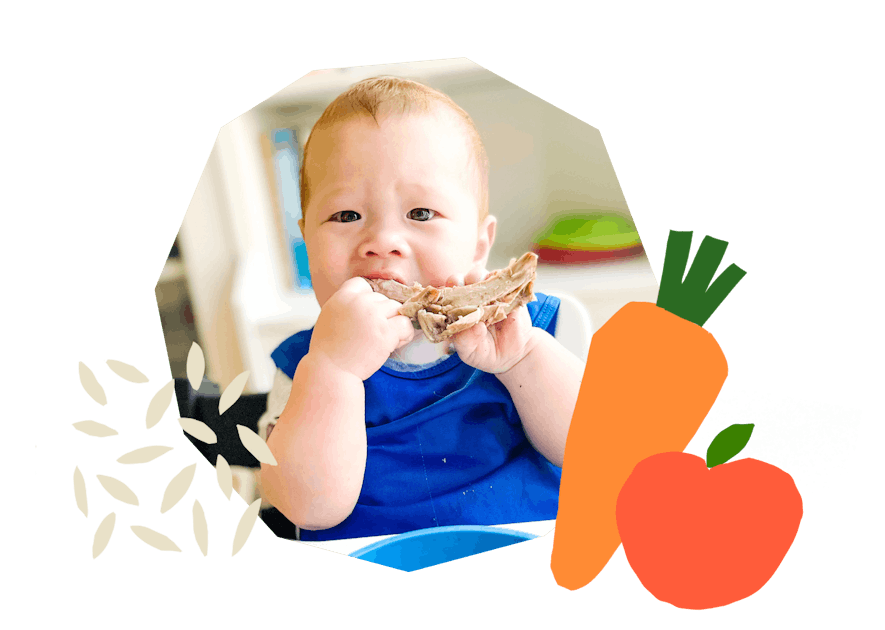
The Program Baby-Led Weaning with Katie Ferraro
A step-by-step digital program for starting solid foods safely and navigating the original 100 FIRST FOODS™ meal plan with baby-led weaning.
 EXPERT-LED, PROVEN APPROACH TO EATING REAL FOOD
EXPERT-LED, PROVEN APPROACH TO EATING REAL FOOD CONCISE VIDEO TRAININGS TO MASTER BABY-LED WEANING
CONCISE VIDEO TRAININGS TO MASTER BABY-LED WEANING 100 FIRST FOODS DAILY MEAL PLAN WITH FOOD PREP VIDEOS
100 FIRST FOODS DAILY MEAL PLAN WITH FOOD PREP VIDEOS
Baby-Led Weaning for Beginners Free Workshop
Is your baby ready to start solid foods, but you’re not sure where to start? Get ready to give your baby a solid foundation to a lifetime of loving real food…even if you’re feeling overwhelmed or confused about this next stage of infant feeding.
Get baby-led weaning recipes and tips delivered to your email inbox.

